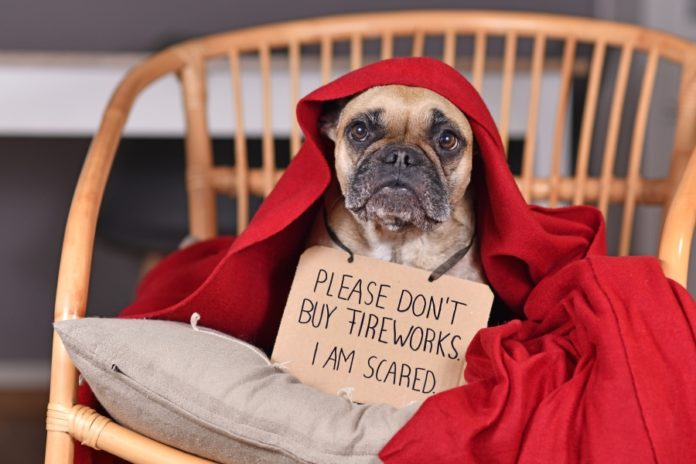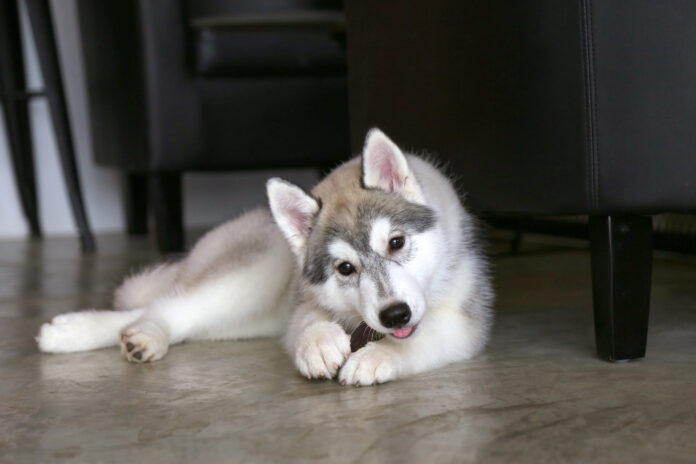Can dogs have panic attacks?

You know your dog can get stressed, but just how stressed can they get? Are panic attacks possible? Unfortunately, yes they are.
It’s not uncommon for dog owners to wonder if their furry friend can experience the same range of emotions that humans do. After all, dogs are known to feel stress and anxiety in certain situations. But, can dogs have panic attacks? The short answer is yes – dogs can definitely have panic attacks. In this article, we’ll take a look at what these episodes might look like, what causes them, and how you can help keep your pup from panicking.
How do dogs show stress?
Dogs can display signs of stress in many ways. Some common ones include:
- Excessive panting
- Shaking or trembling
- Ears flattened against the head
- Tail tucked between the legs
- Hiding or cowering
- Attempting to escape or run away
These are just a few of the ways dogs can show they’re feeling anxious or stressed. If you notice your dog exhibiting any of these behaviors, it’s important to take note of the situation and see if there are any potential triggers.
/* custom css */
.tdi_15.td-a-rec{
text-align: center;
}.tdi_15 .td-element-style{
z-index: -1;
}.tdi_15.td-a-rec-img{
text-align: left;
}.tdi_15.td-a-rec-img img{
margin: 0 auto 0 0;
}@media (max-width: 767px) {
.tdi_15.td-a-rec-img {
text-align: center;
}
}
5 most common reasons for dogs to get anxious
There are a number of different things that can cause stress and anxiety in dogs. Here are 5 of the most common ones:
- Change in routine – Dogs thrive on routine and can get stressed when there’s a change to their normal day-to-day. This could be something as simple as a new person moving into the house or a change in your family’s work schedule.
- Loud noises – Dogs have much sharper hearing than humans, which means loud noises can be especially jarring and stressful for them. For example, things like fireworks, loud music, vacuums, blow dryers, thunderstorms, and construction noise can all cause anxiety in dogs.
- New environments – Dogs may get anxious when placed in a new or unfamiliar environment, such as a kennel, boarding facility, or veterinary office. This type of anxiety can also show up if you’ve recently moved to a new home that your dog isn’t quite yet used to.
- Lack of socialization – Dogs who lack regular socialization (interaction with other dogs and people) can be more prone to stress and anxiety. They would have never had the opportunity to learn that new dogs and people can be potential friends. Which means they likely see all new people or animals as potential threats which causes them to feel strong negative emotions.
- Being left alone – Separation anxiety is a real thing for dogs, and it’s one of the most common reasons pups experience stress and anxiety. When a dog never learns how to be alone it causes them a great deal of distress being away from their owner. If your dog is anxious when left alone, you may need to seek out some professional help to address the issue.
Top tips to keep your dog from panicking
Now that we know a little bit more about what can cause dogs to panic, let’s look at some tips to help prevent it.
Create a safe space – If your dog has a place in the house (or yard) they can go to feel safe and relaxed, this can be a big help in preventing panic attacks. This could be their crate or bed, or even just a corner of the room where they feel comfortable.
Introduce change gradually – If you know there’s going to be a change to your dog’s routine, try to introduce it gradually so they have time to adjust. For example, if you’re going to be gone for an extended period of time, start by leaving them alone for short periods of time while you’re still home. This will help them get used to the idea of being alone and hopefully make the transition easier.
Make sure they’re getting enough exercise – A tired dog is a happy dog, and one of the best ways to prevent stress and anxiety is to make sure your pup is getting plenty of exercise. This will help them stay physically and mentally healthy, and it will tire them out so they’re more able to relax when in situations that would otherwise stress them out.
Mental stimulation – Just like exercise, mental stimulation is important for dogs. If they’re bored and don’t have anything positive to focus on for too long, they may start to experience anxiety. Try to provide them with plenty of toys and puzzles to keep their minds active, and give them plenty of attention when you’re home. You can also provide them with mental stimulation by helping them learn new tricks and behaviors.
CBD – CBD treats or oils can be helpful for some dogs in reducing anxiety. CBD is a natural compound that has calming properties, and it can be helpful for dogs who are experiencing mild to moderate stress. Of course, always talk to your veterinarian before giving your dog any type of supplement as they can help you choose the right product and dosage for your pup.
As you can see, there are a variety of things that can cause dogs to panic, and it’s important to be aware of them so you can help prevent it. In some situations, you’ll be able to help your dog cope by simply using some of the tips provided above. In other more serious situations, you may need help from a professional, whether that’s a veterinarian or a dog behaviorist, to help your dog relax.
Pawcessories
/* custom css */
.tdi_16.td-a-rec{
text-align: center;
}.tdi_16 .td-element-style{
z-index: -1;
}.tdi_16.td-a-rec-img{
text-align: left;
}.tdi_16.td-a-rec-img img{
margin: 0 auto 0 0;
}@media (max-width: 767px) {
.tdi_16.td-a-rec-img {
text-align: center;
}
}




